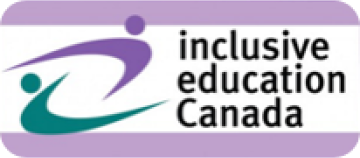
UN Convention on the Rights of Persons with Disabilities
Adopted on December 13, 2006, the Convention on the Rights of Persons with Disabilities (CRPD) promotes, protects, and upholds the rights and dignity of persons with disabilities, ensuring their full participation in society. Canada and each provincial legislature ratified the CRPD in 2010, committing to equal access to opportunities and services for individuals with disabilities.
The CRPD does not establish new rights but highlights essential principles like accessibility, inclusion, and active participation in education, employment, and community life. It acts as a roadmap for removing barriers and fostering inclusive environments.
For Canada, the CRPD provides a framework for building a more inclusive, accessible society where people with disabilities can live with dignity, independence, and equality. By adhering to its principles, we move toward a future where inclusion becomes the norm, not the exception, creating meaningful, lasting change globally and nationally.
WHO WE ARE
Learn more about the fundamental right to education, enshrined in provincial/territorial acts and human rights legislation in Canada internationally.
Right To Inclusive Education
The Current Reality in Canada
Despite progress, segregation remains a significant issue in Canadian schools through practices such as segregated classrooms, seclusion rooms, partial-day attendance, limited access to support teams, and low academic expectations. These systemic barriers exclude children with diverse learning needs, including intellectual disabilities, from full participation in school life, which is unacceptable. Research consistently shows that inclusive education benefits all students academically, socially, and emotionally. By prioritizing inclusion, we can ensure every child can learn, grow, and succeed alongside their peers.
Some realities:
-
Fewer than 50% of children with intellectual disabilities are placed in fully inclusive classrooms.
-
Children with intellectual disabilities are four times more likely to attend specialized schools compared to other children with disabilities (16% vs. 4%).
-
30% of children with intellectual disabilities must leave their local or community schools to access education.
-
A survey of 1,300+ elementary and secondary principals in Ontario revealed that 40% to 50% had, at some point, asked parents to keep their children with disabilities at home.
-
Students with disabilities face 2.5 times higher suspension rates compared to their peers, further limiting their access to learning opportunities.
-
Only 60% of students with intellectual disabilities complete high school, compared to 88% of students without disabilities.
-
In a national study, 75% of parents reported that their children with disabilities were excluded from extracurricular activities due to a lack of accommodations or support.
-
Children with disabilities are more likely to experience bullying and social isolation, with rates nearly twice as high as their non-disabled peers.
These statistics underscore the urgent need for systemic change. Inclusive education is not just about placement; it’s about creating environments where every student feels supported, valued, and able to reach their full potential.
CRPD Article 24 – Inclusive Education
Article 24 of the CRPD affirms the right of children with disabilities to inclusive education and prohibits discrimination. It requires state parties to eliminate barriers to participation in general education classrooms, promoting full inclusion within schools and society. This is the first time inclusive education has been explicitly defined in international human rights law. A more specific description on what is meant in Article 24 can be found in its companion explanation General Comment No. 4.
Inclusive Education Canada advocates for policy reforms, improved funding, and systemic changes to guarantee all children, regardless of ability, can access and thrive in inclusive classrooms. The CRPD provides a critical legal foundation for advancing these efforts and creating fully inclusive schools in Canada.
To view a plain language version of Article 24, click here.
The Legal Framework for Inclusive Education in Canada
Education is vital for shaping careers, relationships, and contributions to society. Students’ experiences—from early childhood to classrooms and playgrounds—lay the foundation for lifelong inclusion and participation.
In Canada, provincial and territorial education acts guarantee access to public education for children aged 5-6 through 18-21, regardless of ability. Human rights laws further protect against discrimination, ensuring every child’s right to an education that meets their needs.
The 2012 Supreme Court ruling Moore v. British Columbia reaffirmed that adequate support for individual students is an essential service, not a "dispensable luxury." The Court ruled that accommodations are “the ramp that provides access” to education, requiring schools to remove barriers unless doing so causes "undue hardship." This decision obligates local school authorities to address obstacles and proactively ensure access to supports.
To fulfill this legal mandate, schools must adopt inclusive planning and allocate resources effectively, supported by adequate provincial funding. Ensuring access to inclusive, community-based education is critical to creating an equitable system where every child—regardless of ability—can learn and succeed.
“Parents of children with disabilities face many challenges, but few as great as ensuring their children get a good education.”
– CBC, The Current, April 29, 2014


